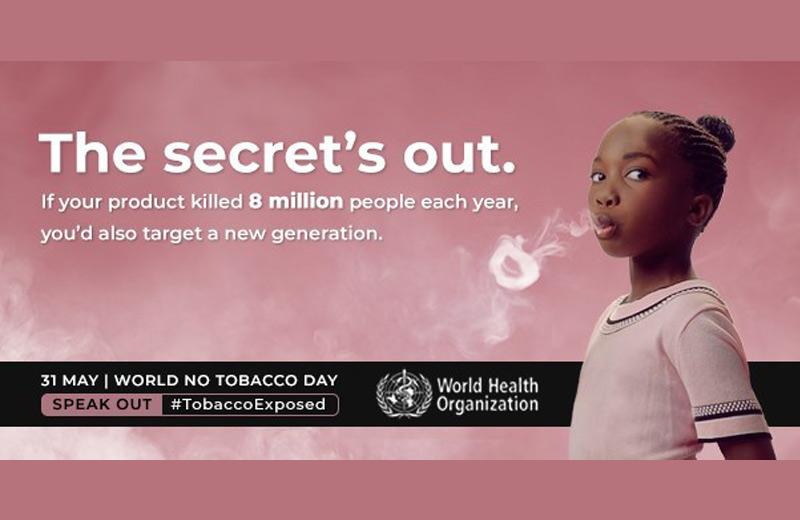This year, the goal of World No Tobacco Day is to protect youth from industry manipulation and prevent them from using tobacco, vapour, and nicotine.
As a nurse, I’ve seen first-hand the devastating health effects commercial tobacco use has on society. It scares me to see how quickly children have become addicted to nicotine flavoured products that are not harmless. Tobacco use is a major public health threat – it remains the leading preventable cause of death worldwide and now we’re also combating flavoured nicotine products that lure kids into their trap of addiction.
Nothing good about nicotine
There is literally nothing good about nicotine!
When you crave tobacco or vapour, what you’re really craving is nicotine, an addictive chemical found in in both products. It’s is a highly addictive, toxic substance that’s experts believe is just as addictive as opioids, alcohol, and cocaine. For youth with developing brains, nicotine can be viewed as brain poison: it can alter brain activity to make attention, memory, and learning more difficult. Nicotine may also worsen anxiety, irritability, and impulsivity. Sadly, nicotine-induced changes to the brain during adolescence can be permanent.
“Today’s teenager is tomorrow’s potential regular customer.” – Phillip Morris Tobacco, 1981.
How children are targeted
Most tobacco and vapour users start using the products in their teens and cannot quit, nor do they know where to get help. We know that most vaping products come in a wealth of flavours and easily hidden devices. These are key factors that attract youth to begin experimenting and using vapour products. Flashy advertisements with bright colours and sexy images are geared toward enticing a new, young audience to start vaping. Kids are marketed into playing with their vape to compete in clouding competitions as well as vape trick contests that resemble a fog machine with nicotine. We need to limit such exposure to our youth.
Break the cycle, protect a new generation
Children need to be protected from abuse by the tobacco industry. This industry is continually looking to capture the attention of a new generation and hook them on a highly addictive substance. Empowered youth need to take a stance and stand up for their health and well-being, and stop being lied to by big tobacco. We ask those who influence on social media, pop culture, as well as in the medical field, schools and home, to kibosh this industry, and model healthy behaviours. Advertisers are crafty -when ads are flashy, at eye level, and look like harmless candy, they catch the attention of children and youth. Big tobacco is always looking to get a new customer, and it’s important that we limit the visual exposure that seduces our children to thinking nicotine products are appealing.
Big tobacco works tirelessly to capture our children’s attention as older customers decrease in number
If we stand together, we can destroy this business model and protect our future generations to come. Having open conversations with your family members about issues like substance use (tobacco and vaping) helps foster positive relationships and good health outcomes.
- Start the conversation (be calm, positive, practise active listening, and engage)
- Set a positive example. Don’t use tobacco or vapour products around children
- Know the facts and where to seek support (see “Further supports” below)
- Don’t buy or give tobacco/vapour products to minors
- Keep the conversation going
Refer to Health Canada’s Talking with your teen about vaping: tip sheet for advice on having conversations with youth on vaping.
Further supports:
- Quitnow: tobacco and vapour cessation support
- BC Smoking Cessation Program
- First Nations Health Authority: coverage for cessation products
(Note: in this story, as in most public health messages, “tobacco use” refers to the use of commercial tobacco products like cigarettes and chewing tobacco as opposed to traditional uses of tobacco.)














Comments